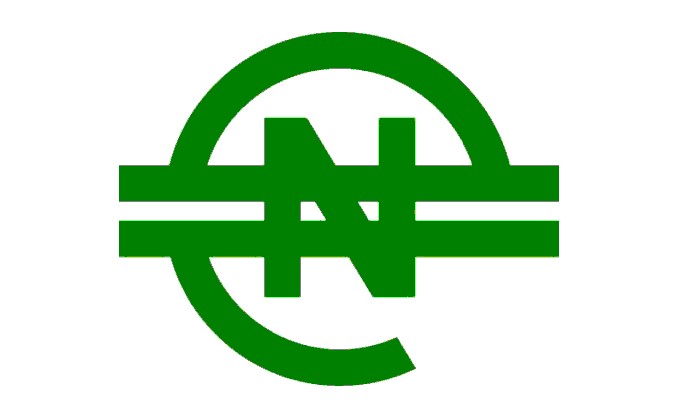doomed US crypto bills, Nigeria’s CBDC lacks repeat users, central banks don’t like crypto either – Attack of the 50 Foot Blockchain

- I’m doing a couple of sessions for the Crypto Policy Symposium in about a week, September 5th and 6th, 2022. The sessions are all Zoom-based, so just go with the flow – tune in for free! There will also be a reception in London and I need to find the details in time to attend. [Crypto Policy Symposium]
- This site is funded by my Patreon – your $5 or $20 a month really helps. Don’t forget to message and request “Bitcoin: It Can’t Be That Stupid” stickers! [Patreon]
- Sign up to receive these newsletters, and all my other blog posts, by email the moment they go up. [scroll down, or click here]

Crypto notes fall flat after crash
Wasn’t that bill from Lummis-Gilibrand on the “Responsible Financial Innovation Act” in June fantastic!
After the months of hype since March – it was really more of a media event than a bill – even the crypto industry wanted to send the text back for rewriting. This is what happens when you assume the bubble will last forever and then you don’t get the bill until after the May UST/luna crash. [The Block; Senate, PDF]
The adults thought the Lummis-Gilibrand bill was terrible, too—it would give what were functionally uninsured banks direct access to Federal Reserve services, risking making these uninsured wildcat banks systemically critical. The adults understand exactly the crypto industry’s desired endgame here: government as bagholder of last resort. [Washington Post]
The text of the Waters-McHenry stablecoin bill from July has had a limited release – i.e, I can’t link you to a copy — and everyone hates it. “Annoying Both Sides” is a win condition only if your bill still has some fans.
The bill enshrines the CFTC as the stablecoin regulator, and not the SEC. The Federal Reserve will be asked to issue a CBDC.
The bill defines stablecoins as “payment stablecoins” – this is an attempt to regulate something like Facebook’s Libra. This ignores that actual use case for stablecoins is crypto trading, and specifically to be handy duffel bags full of $100 bills for DeFi shenanigans. Stablecoin activity on exchanges is not recorded at all.
Uninsured non-banks would be admitted into the banking system and given access to Federal Reserve services. This poses the same risk as the Lummis-Gilibrand bill. With the recent crypto crash, and Circle’s ability to lose hundreds of millions of dollars while printing their own dollars, this is possibly not an idea that would work well. Existing banks can also issue unsecured stablecoins.
Consumer advocates also complained that the committee that drafted the bill ignored their concerns. [Prospect]
Senate Agriculture Committee Chair Debbie Stabenow and Ranking Member John Boozman have introduced the Digital Commodities Consumer Protection Act bill, which has also been in the works for several months. [WSJ, paywalled; GovInfo, PDF; Senate, PDF]
The DCCPA puts commodity, non-security cryptos under the CFTC – they’re thinking specifically of bitcoin and ether, but whether post-merger ether is a security is an unresolved question. Trading facilities, brokers, dealers and custodians must register with the CFTC. Platforms must monitor and stop abusive practices.
Why the Agricultural Committee? Many commodities are farm products, and the CFTC started in production futures markets. They also have a lot of experience with cowboys and cow dung.
The Tech Transparency Project writes about how crypto companies are stacking state-level committees to write their own laws. “States have effectively delegated the task of regulating the crypto sector to those who have the greatest financial stake in its success, with little regard for those who stand to lose.” [Tech Transparency Project]
Central bank, like on the blockchain
I mentioned earlier how Nigeria’s eNaira CBDC had a lack of current users. eNaira has also yet to have very many recurring users. There is an average of 1.35 transactions per active wallet. [Quartz; Nairametrics; YouTube]
The Honorable John Kiff has resigned from the International Monetary Fund, but wrote up CBDCs for them. Kiff believes CBDCs will need the ability to work completely offline. Previous working examples of offline digital currency include stored value cards such as Avant (Finland) and Mondex (UK). The Bahamas Sand Dollar had disabled functionality in the spec, but I understand that this feature is not working yet. [IMF]
The Reserve Bank of Australia is doing a CBDC! Well, the RBA is starting a year-long program to find a use case for a CBDC. [IT News]
Lie dream of a casino soul
South Korea’s Financial Services Commission blocks 16 foreign crypto exchanges. Blocked exchanges include MEXC, KuCoin, CoinW, CoinEX, ZB.com, Bitglobal, Bitrue, Poloniex, BTCEX, Phemex, XT.com, Pionex, BTCC, DigiFinex – not related to Bitfinex/iFinex – AAX and ZoomEX.
If you want to provide services to Koreans, you must report extensively to the FSC. The FSC asked the exchanges in July 2021 to start reporting, and they continued to market and sell their services to Koreans.
The FSC will ask the credit card companies to block transactions with the exchanges. The websites will also be blocked in South Korea. [CryptoSlate; News1, in Korean]
The FDIC cracked down on a bunch of crypto companies for making unfortunate claims about having FDIC insurance on deposits. The most notable was FTX, when Brett Harrison of FTX tweeted that “cash associated with brokerage accounts is managed into FDIC-insured accounts at our partner bank.” Harrison deleted that tweet and apologized, saying that “We really did not mean to mislead anyone, and we did not suggest that FTX US itself, or that crypto/non-fiat assets, benefit from FDIC insurance” — even as his actual words saying so may have been interpreted that way. He then deleted the apology tweet. [press release; letter, PDF; Twitter, archive; Twitter, archive]
Central banks don’t like you either
Lael Brainard, deputy chairman of the Federal Reserve, told the Bank of England conference in July that it is “important that the foundations for proper regulation of the financial cryptosystem are established now before the cryptoecosystem becomes so large or interconnected that it can pose risks. to the stability of the wider financial system.” [Federal Reserve]
You’ll never get a central banker to say that every possible payment channel can’t “potentially” go somewhere. But this is a call against shadow banks, and for firm regulation.
Brainard’s polite words are how a central banker says “put this rubbish in the bin”. Paul Krugman notes that “For a document necessarily written in Fedspeak, it is remarkably incendiary.” [Twitter]
Fed Governor Michelle Bowman spoke in August to the VenCent Fintech conference on “technology, innovation and financial services.” Crypto services need regulation, “although interest seemed to have cooled recently, given recent developments in the crypto industry.” Also, FedNow is cool and CBDC is not. [Federal Reserve]
The Bank for International Settlements writes up what the last decade has demonstrated to us in painful detail – that permissionless blockchains suck for real work, and they don’t scale. The chains suffer from congestion and high fees, sending users to alternative blockchains, leading to fragmentation. [BIS]
David Rosenthal speaks to the Financial Stability Oversight Council, asking them not to accept false claims of technological innovation from blockchain vendors. Treat these things like financial instruments – and remember that “decentralized” is always a lie. [blog post]
ANZ’s toy stablecoin makes a second transaction
A$DC, ANZ Bank’s private Australian dollar stablecoin, made a transaction in June 2022! This was to their clients Victor Smorgon Group and Zerocap, who were trading carbon credits from BetaCarbon – just like the previous A$DC transaction in March 2022 was.
This was a toy demo transaction to justify a press release – ANZ specifically struck a deal with Victor Smorgon and Zerocap that A$DC could be flipped back to Australian dollars. ANZ considers A$DC to be a “tokenised deposit”. ANZ is discussing with regulators how to expand A$DC. [press release; AFR]
Public consultations
The SEC has published its draft strategic plan for 2022-2026 for public comment. There are only two mentions of “crypto”, and neither is significant – just “yep, we should get into that too.” You have a month or so to get comments. [SEC]
The Law Commission of England and Wales has published a consultation document on laws for “digital assets” – cryptocurrencies and NFTs. The article proposes a legal category of personal property to be called “data objects”, and aims to “clarify” laws around the ownership, control and transfers of digital assets. You should receive your answers by November 4, 2022. [Law Commission]

























